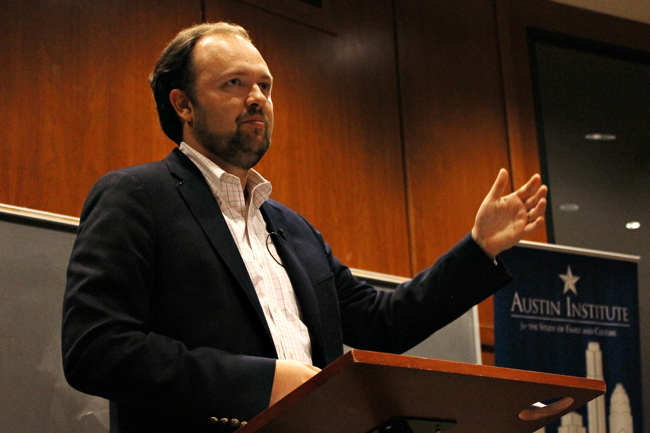The New York Times columnist Ross Douthat spoke Thursday about the evolution of marriage and the possible changes marriage could see in the future.
Douthat said there are behavioral and ideological divisions among different types of American marriages today.
“This divide around marriage has become one of the most vivid illustrations of class division in America overall,” Douthat said.
According to Douthat, the behavioral divide is the difference between educated couples with advanced degrees who are getting married and working-class couples who sometimes have children but do not get married or get married and then get divorced.
“Alongside that divide, you have the emergence of an ideological rivalry between different conceptions of what marriage is,” Douthat said. “This divide tracks pretty closely with religious beliefs. It travels some extent with political ideology, and it picks an older, more ‘traditional conception,’ which stress the interrelation of sex and marriage, and child rearing, and views gender complementarity as having something to do with the institution of marriage.”
Douthat said he sees the role of marriage in American society moving in one of four directions in the future.
The first scenario he discussed predicted an economic change and a return to antiquated gender roles. According to Douthat, this new model of marriage would be strengthened by steady wage growth for less-educated parts of cities. This would, in turn, structure families and marriages by following the education, then job, then children trajectory.
The second scenario Douthat discussed depicts the role of marriage as more neotraditional and egalitarian. According to Douthat, this scenario is more realistic about sex before marriage in regards to gender roles, and these couples would be less likely to divorce.
Douthat’s third scenario predicted the fading away of marriage. Douthat said scenario three stresses conscious coupling and uncoupling, in which more college educated people would have long-term partnerships that progress into raising children as a family.
Douthat said the fourth scenario resembles current marriages.
“Actually, things might not change that much,” Douthat said. “We might have reached a place that is a stable equilibrium for society as a whole, even though it is unstable for the personal lives and upbringings of a large segment of the poor and working-class America.”
Economics graduate student Jane Ryngaert said she was glad the scenarios featured various perspectives.
“I think he was pretty optimistic about all of it in general,” Ryngaert said. “It was nice that not all four of them were ‘doomsday.’”





















